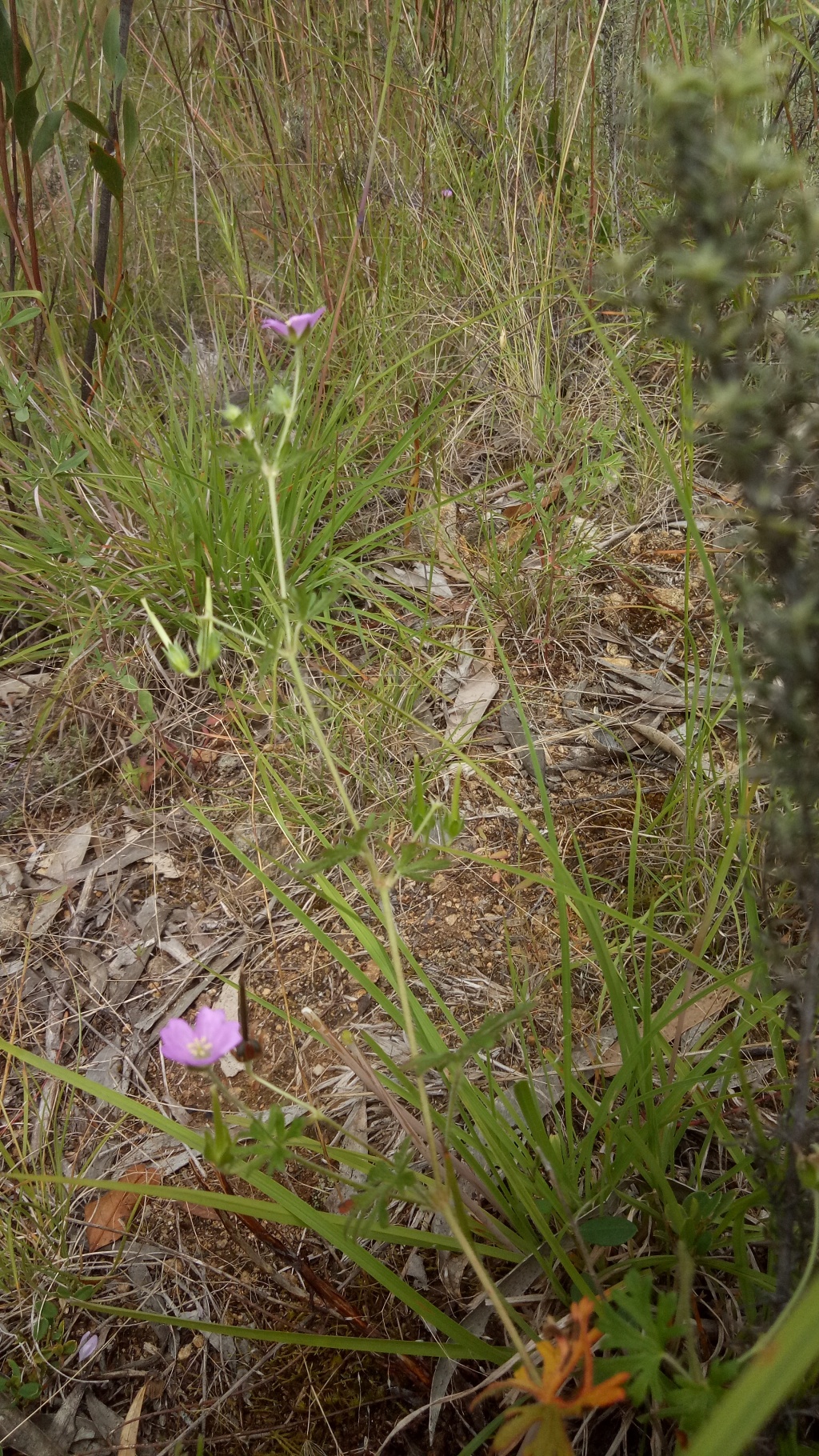Geranium solanderi var. solanderi
Austral Crane's-billDecumbent to ascending perennial; stems to 50 cm long, with short spreading or recurved hairs and long (sometimes deciduous) patent to slightly recurved and/or crisped hairs; taproot c. spherical to napiform. Leaves orbicular to reniform, to 6 cm long; palmatisect with 5–7 deeply 2- or 3-fid primary lobes, often further dissected, ultimate lobes obtuse to subacute, upper surface glabrescent, or with scattered, curved hairs, lower surface with sparse, long, spreading hairs; stipules triangular to narrow-ovate, short-acuminate or often short-laciniate. Flowers solitary or paired; peduncles 0.7–2.5 cm long, pedicels 0.6–2.5 cm long; sepals ovate to narrow-elliptic, 4–5.5 mm long, (sub)acute, pubescent with minute, glandular and eglandular hairs, and longer spreading hairs, margins occasionally translucent, mucro 0.5–0.9 mm long; petals obovate, 5–7.5 mm long, c. truncate to retuse, bright pink; anthers pink to lemon with purple dehiscence lines. Fruits 1.2–1.5 cm long; mericarps unevenly pubescent, hairs becoming longer toward awn, suture margins irregularly short-ciliate; seed rugose with large isodiametric alveolae with occasional membranous deposits. Flowers Oct.–Jan.
Wim, GleP, VVP, VRiv, MuF, GipP, OtP, Gold, CVU, GGr, DunT, NIS, EGL, EGU, HSF, HNF, Strz, MonT, HFE, VAlp. Also WA, SA, NSW, ACT, Tas. Also New Zealand. An uncommon species of damp to dryish, usually sheltered sites in grassy woodlands, often along drainage lines or in seepage areas.
Formerly including Geranium spp. 1, 2 and 4 (see notes under those species), but here more narrowly defined. Characterized by the long, patent indumentum on most stems, bright pink petals with c. obscure veins and retuse apices, anthers with dark purple dehiscence lines, uneven mericarp indumentum and cauline leaves with narrow (but usually not linear) lobes.
Smith, L.P. (1999). Geranium. In: Walsh, N.G.; Entwisle, T.J., Flora of Victoria Vol. 4, Cornaceae to Asteraceae, pp. 219–233. Inkata Press, Melbourne.
 Spinning
Spinning
